Hello everybody.
many people tell me that the 18sound KIT I own is not suitable for home listening but they do not explain why with technical details.
I'm not an expert, can you explain it to me please? .
I attach technical data images.
bye thank you .
many people tell me that the 18sound KIT I own is not suitable for home listening but they do not explain why with technical details.
I'm not an expert, can you explain it to me please? .
I attach technical data images.
bye thank you .
Attachments
-
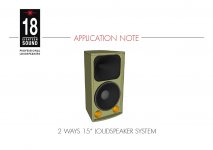 18sound_15 2ways1024_1.jpg43.8 KB · Views: 574
18sound_15 2ways1024_1.jpg43.8 KB · Views: 574 -
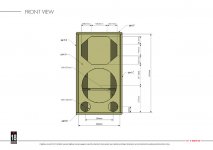 18sound_15 2ways1024_10.jpg51.4 KB · Views: 182
18sound_15 2ways1024_10.jpg51.4 KB · Views: 182 -
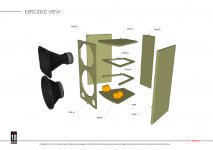 18sound_15 2ways1024_9.jpg60.3 KB · Views: 199
18sound_15 2ways1024_9.jpg60.3 KB · Views: 199 -
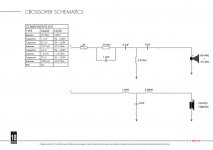 18sound_15 2ways1024_8.jpg56.4 KB · Views: 162
18sound_15 2ways1024_8.jpg56.4 KB · Views: 162 -
 18sound_15 2ways1024_7.jpg134.5 KB · Views: 141
18sound_15 2ways1024_7.jpg134.5 KB · Views: 141 -
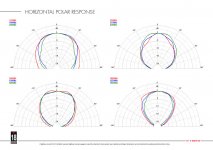 18sound_15 2ways1024_6.jpg131.2 KB · Views: 239
18sound_15 2ways1024_6.jpg131.2 KB · Views: 239 -
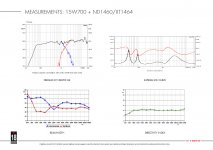 18sound_15 2ways1024_5.jpg94.1 KB · Views: 553
18sound_15 2ways1024_5.jpg94.1 KB · Views: 553 -
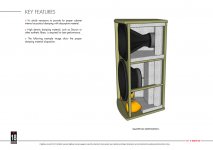 18sound_15 2ways1024_4.jpg63 KB · Views: 561
18sound_15 2ways1024_4.jpg63 KB · Views: 561 -
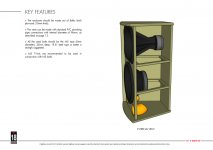 18sound_15 2ways1024_3.jpg62.9 KB · Views: 572
18sound_15 2ways1024_3.jpg62.9 KB · Views: 572 -
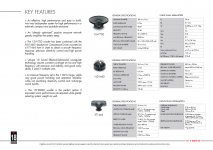 18sound_15 2ways1024_2.jpg131.2 KB · Views: 569
18sound_15 2ways1024_2.jpg131.2 KB · Views: 569
Well, it depends on your requirements really. As you can see, this pro speaker has a high directivity from about 800Hz upwards. It 'beams' high frequencies, as you can see in the polar plots. For a lot of home applications, less beaming of (high) frequencies is beneficial, the sweet spot for optimal listening is big and you enjoy a reasonably full spectrum all over the place.
That being said, if you listen in your favorite chair mainly and don't care about dropping high frequencies elsewhere, this isn't a problem at all. This design (and others like this) will play very loud and that with not too much distortion. There are other trade-offs, likely. Distortion levels on moderate listening levels could be somewhat high and there is virtually no deep bass extension (the lowest octave of a piano). In pro applications this set would be complemented by pro subwoofers.
That being said, if you listen in your favorite chair mainly and don't care about dropping high frequencies elsewhere, this isn't a problem at all. This design (and others like this) will play very loud and that with not too much distortion. There are other trade-offs, likely. Distortion levels on moderate listening levels could be somewhat high and there is virtually no deep bass extension (the lowest octave of a piano). In pro applications this set would be complemented by pro subwoofers.
Why wouldn't be good for home listening? It depends on the listener's taste.
Personally I like these type of speakers at home.
Personally I like these type of speakers at home.
These drivers are optimised for loudness (99dB) that is all. If somebody likes them, they would sound sweet to him/her anyway, so he/she can use them at home without problems.
Last edited:
If the OP is using a small amp for instance then he can definitley make use of good efficiency.
The woofer used in this kit isn't one of those "hardcore PA monsters" with its curvilinear cone and medium power handling capacity. It may therefore be better in the midrange as many other drivers that are often used for power HiFi. 18s drivers are built very nicely in general.
What I don't like about this kit is the response that is rising towards higher frequencies but that can be cured by different means. The simplest of them is listening a little off-axis.
For my personal taste they don't go low enough but that could be cured also if needed. But maybe he wants to add a sub later on anyway. Or maybe the bass extension is to his taste anyway.
Regards
Charles (who is listening to speakers using the same waveguide while typing this text)
The woofer used in this kit isn't one of those "hardcore PA monsters" with its curvilinear cone and medium power handling capacity. It may therefore be better in the midrange as many other drivers that are often used for power HiFi. 18s drivers are built very nicely in general.
What I don't like about this kit is the response that is rising towards higher frequencies but that can be cured by different means. The simplest of them is listening a little off-axis.
For my personal taste they don't go low enough but that could be cured also if needed. But maybe he wants to add a sub later on anyway. Or maybe the bass extension is to his taste anyway.
Regards
Charles (who is listening to speakers using the same waveguide while typing this text)
Last edited:
Hello everybody.
many people tell me that the 18sound KIT I own is not suitable for home listening ...
Normally you would use a device that satisfies your current needs.
Does this kit sound good enough to you? If so, then there is no problem.
Well, it depends on your requirements really. As you can see, this pro speaker has a high directivity from about 800Hz upwards. It 'beams' high frequencies, as you can see in the polar plots. For a lot of home applications, less beaming of (high) frequencies is beneficial, the sweet spot for optimal listening is big and you enjoy a reasonably full spectrum all over the place.
That being said, if you listen in your favorite chair mainly and don't care about dropping high frequencies elsewhere, this isn't a problem at all. This design (and others like this) will play very loud and that with not too much distortion. There are other trade-offs, likely. Distortion levels on moderate listening levels could be somewhat high and there is virtually no deep bass extension (the lowest octave of a piano). In pro applications this set would be complemented by pro subwoofers.
the high directivity at a narrow angle does not make me exult with joy but I can reluctantly adapt.
instead I cannot accept the high distortion at low volume.
how many decibels do you mean by low volume?
the lack of extension in the deep bass I think is a problem common to many other loudspeakers.
If the OP is using a small amp for instance then he can definitley make use of good efficiency.
The woofer used in this kit isn't one of those "hardcore PA monsters" with its curvilinear cone and medium power handling capacity. It may therefore be better in the midrange as many other drivers that are often used for power HiFi. 18s drivers are built very nicely in general.
What I don't like about this kit is the response that is rising towards higher frequencies but that can be cured by different means. The simplest of them is listening a little off-axis.
For my personal taste they don't go low enough but that could be cured also if needed. But maybe he wants to add a sub later on anyway. Or maybe the bass extension is to his taste anyway.
Regards
Charles (who is listening to speakers using the same waveguide while typing this text)
the amplifier is a my-ref-fe.
I must specify that the KIT is not assembled yet, I only have the horns and the drivers.
do you advise me to sell?
You can design a bigger box ( or get it designed by someone else)
This kind of PA design is a compromise for making it transportable and often there are subwoofers to make aid in the lower register.
PA means big spaces or open space, in a home there might be a different attitude when listening to music. Also the crossover, which is 3rd order for both wf and tw, is typical for PA. Probably it needs to be 'adjusted' for home, where the power is typically an order or two orders of magnitude inferior to those used at home
This kind of PA design is a compromise for making it transportable and often there are subwoofers to make aid in the lower register.
PA means big spaces or open space, in a home there might be a different attitude when listening to music. Also the crossover, which is 3rd order for both wf and tw, is typical for PA. Probably it needs to be 'adjusted' for home, where the power is typically an order or two orders of magnitude inferior to those used at home
Build it! You will love it! Lots of dynamics and fun even at low volumes. I will never get anything than PA drivers again, I’m not looking back hifi is dead to me pro is the way to get real sound.
Someone said that these 18Sound speakers are not good for home/hifi usage?
Max 2 - Unison Research - Official Website
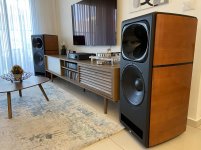
Max 2 - Unison Research - Official Website

I agree, needs a sub or larger cab + lower tuning.You can design a bigger box ( or get it designed by someone else)
This kind of PA design is a compromise for making it transportable and often there are subwoofers to make aid in the lower register.
PA means big spaces or open space, in a home there might be a different attitude when listening to music. Also the crossover, which is 3rd order for both wf and tw, is typical for PA. Probably it needs to be 'adjusted' for home, where the power is typically an order or two orders of magnitude inferior to those used at home
I would also consider thicker walls and more bracing.
To the OP:
At first I would mail to 18sound, if the data set for this kit is correct.
To me some things are very strange.
The text says to use the XT1464 horn which is 60x50 degree with an 1.4" throat.
In one picture they show the XT1086 which is 80x60 degree with 1" throat.
The beamwidth plot shows a horizontal directivity of around 80 degree from 4000 to 10000Hz.
How does this work with a 60 degree horn ?
Next problem for me is the crossover choice of around 1600Hz for such a large and deep horn.
The idea of large horns is to cross over as low as possible, which in this case would be anywhere from 800 to 1000Hz.
For me some parts of the data set look like 18sound used an 1" driver on the XT1086.
At first I would mail to 18sound, if the data set for this kit is correct.
To me some things are very strange.
The text says to use the XT1464 horn which is 60x50 degree with an 1.4" throat.
In one picture they show the XT1086 which is 80x60 degree with 1" throat.
The beamwidth plot shows a horizontal directivity of around 80 degree from 4000 to 10000Hz.
How does this work with a 60 degree horn ?
Next problem for me is the crossover choice of around 1600Hz for such a large and deep horn.
The idea of large horns is to cross over as low as possible, which in this case would be anywhere from 800 to 1000Hz.
For me some parts of the data set look like 18sound used an 1" driver on the XT1086.
how many decibels do you mean by low volume? the lack of extension in the deep bass I think is a problem common to many other loudspeakers.
the amplifier is a my-ref-fe. I must specify that the KIT is not assembled yet, I only have the horns and the drivers. do you advise me to sell?
It appears to me that this woofer would still offer around 95dB/W /m (even after all EQ), which is more than enough for in-room home use. Functionality is guaranteed its just that any superlative performance is not. You don't have to sell if the money didn't come easily. Try to change things a little so that they're usable at home.
Try to avoid using the woofer into the midrange by lowering the crossing a bit (600-800Hz), try two ways, if not good, lower to 300-400Hz and use three ways. You may need a deeper horn. The amplifier is also sufficient to make the initial assessments I guess. How many watts does it make into 8ohms?
Last edited:
Distortion levels on moderate listening levels could be somewhat high
Can you point to any evidence of this?
Chris
No evidence at hand. Pro driver design however focuses on efficiency and therefore cone, suspension and motor design isn’t optimized on linearity or resonances.
Markbakk, you wrote that:
This is simply not true at all in general.
Distortion levels on moderate listening levels could be somewhat high
This is simply not true at all in general.
No evidence at hand. Pro driver design however focuses on efficiency and therefore cone, suspension and motor design isn’t optimized on linearity or resonances.
Well, the good PA drivers manage both just fine. Features that would be considered "HiFi" like motor demodulation, dual spiders (with one inverted to cancel non-linearities) and treated cones are all pretty standard with high-end PA drivers.
Further, a highly efficient driver with a large cone will require low current (ie, less flux modulation) and less excursion (in a more linear Kms(x) region) than a HiFi driver, so will likely be operating at considerably lower distortion levels for a given SPL.
Something like the Eminence Alpha 10 is very different to a Faital Pro 10FH520. You're likely thinking about the former, but the latter is a very different animal.
Chris
No evidence at hand. Pro driver design however focuses on efficiency and therefore cone, suspension and motor design isn’t optimized on linearity or resonances.
Yes there is something called a "controlled cone breakup" that is purposely introduced to extend the midrange on PA woofers, that also unfortunately generates stronger second harmonics. This technique is not usually adopted in the more linear drivers used in studio monitors, cinema sound etc. But I am extremely sorry that I do not recollect where I read that.
Well, on second thought, I checked some driver measurements of pro mid drivers sized 5” and comparable ‘hifi’ drivers. HD of the pro drivers often is higher. Not always likely, but often. Or compare the various 6” drivers of eighteensound. The infamous 430 is a distortion miracle (Purifi values in all but low frequency) but the more efficient drivers do worse.
- Home
- Loudspeakers
- Multi-Way
- KIT 18sound